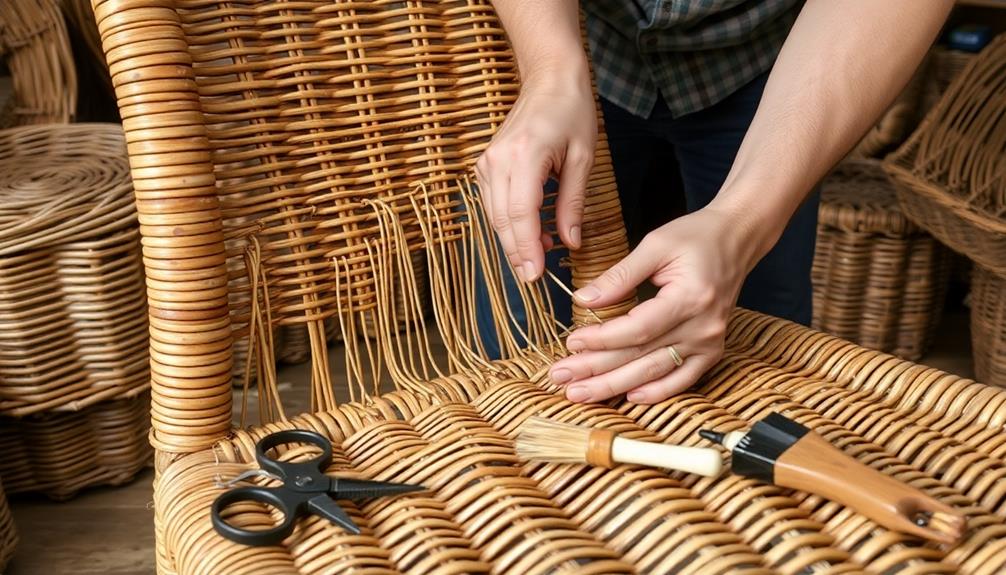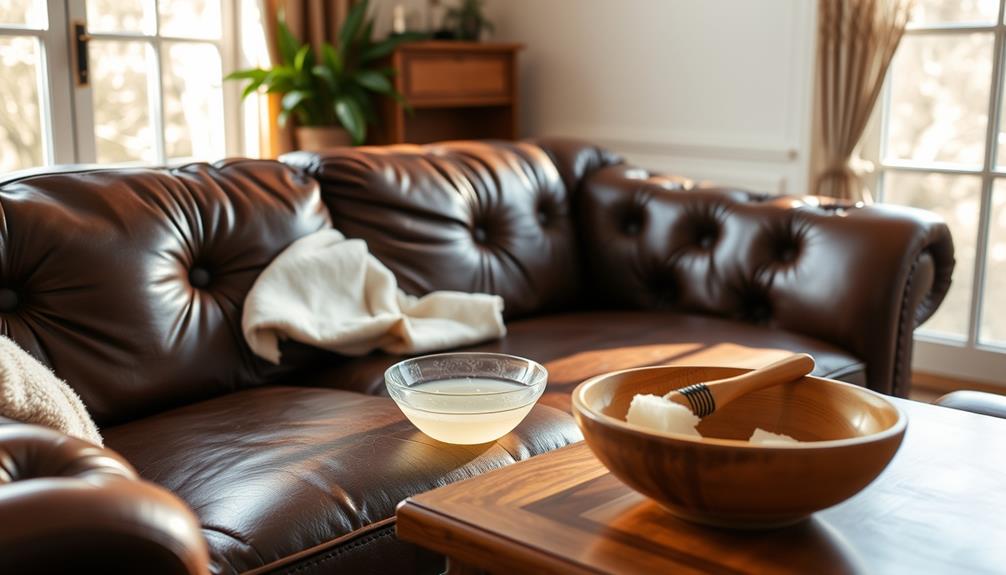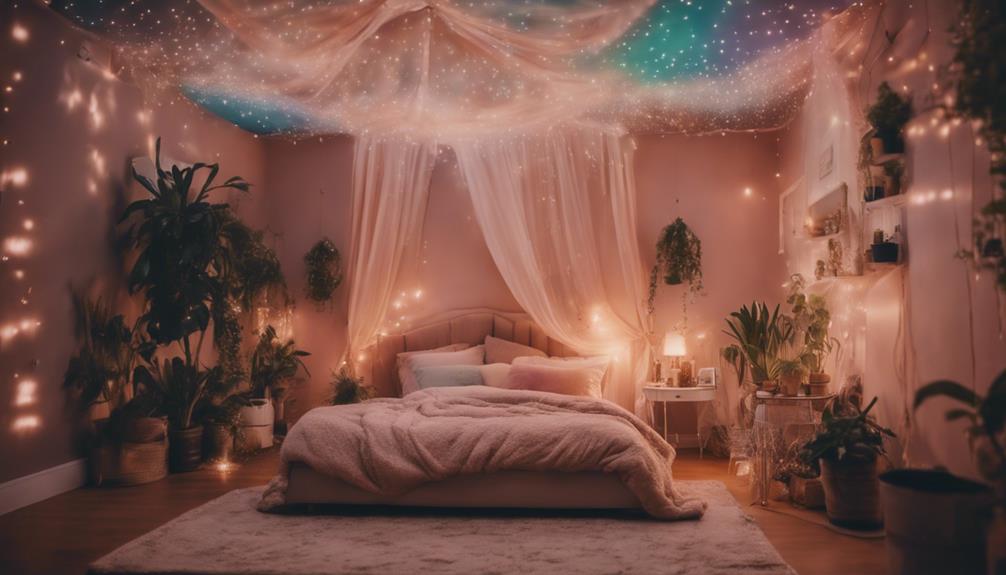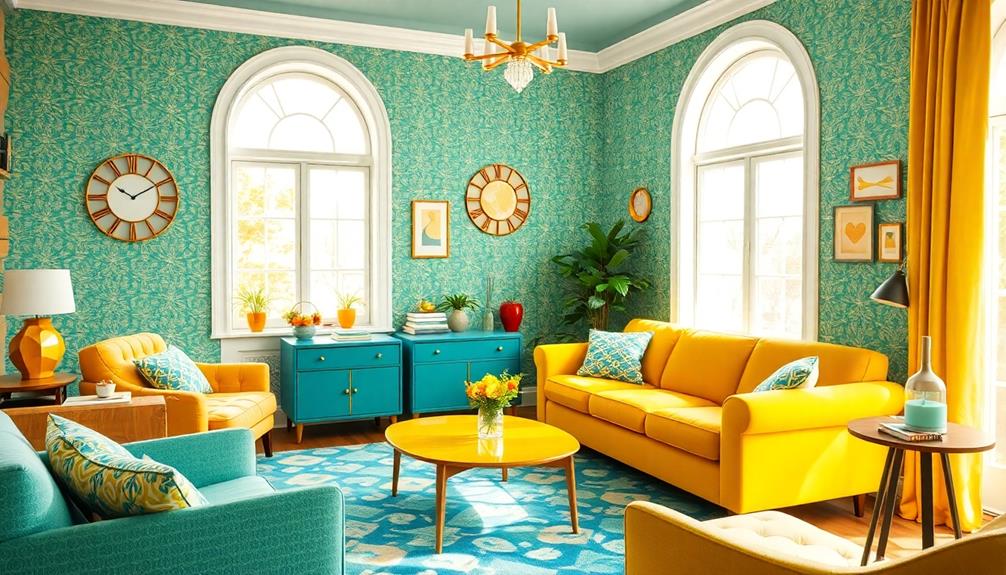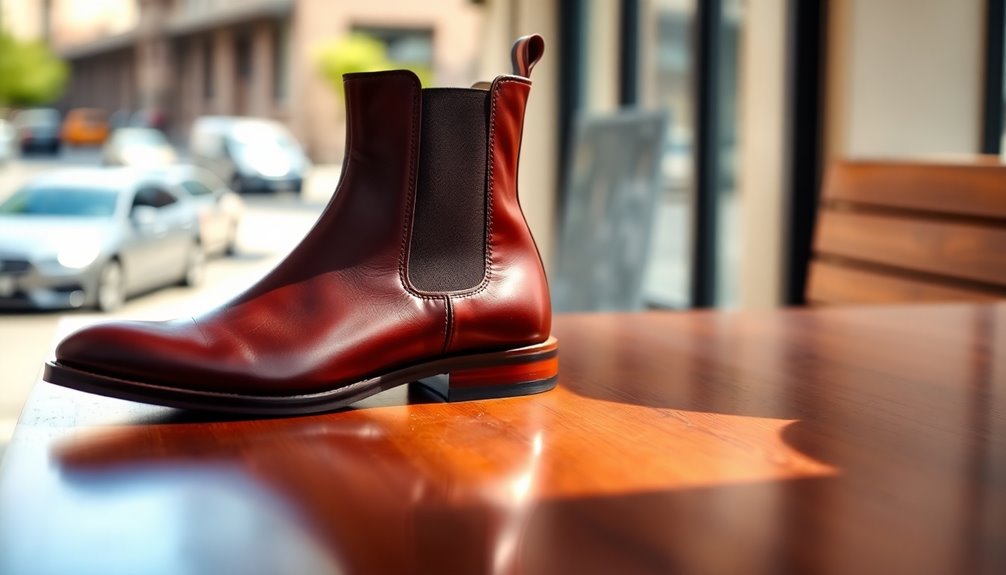You will notice that Architectural Anarchy in the Neo-Eclectic style is becoming more prominent in city skylines, merging traditional and modern elements in captivating ways. This trend encourages creativity by combining materials such as brick, stone, and foam to add depth and energy to urban areas. Vibrant color palettes and unique fixtures create striking visual effects that enhance architectural details. Sustainable materials play a key role, while personal details bring individuality to each design. This movement is not only reshaping buildings, but also turning entire communities into dynamic works of art. Keep exploring the endless possibilities to see how this trend continues to develop.
Key Takeaways
- Neo-Eclectic architecture blends traditional and modern elements, creating unique structures that redefine urban skylines with character and vibrancy.
- The use of vibrant color schemes accentuates architectural features, transforming cityscapes into visually enchanting experiences.
- Textural diversity, with materials like stone and stucco, adds depth and interest, enhancing the eclectic feel of urban environments.
- Innovative, sustainable materials promote eco-friendly designs while allowing for creativity and customization in construction.
- Architectural anarchy encourages personal expression, combining diverse styles and elements to reflect individuality in urban landscapes.
The Rise of Neo-Eclectic Style

You've probably noticed how the skyline of modern cities is transforming, thanks to the rise of the Neo-Eclectic style. This architectural phenomenon blends traditional elements with contemporary flair, creating visually striking structures that defy conventional design rules.
You'll see an exciting mix of materials, from classic brick and stone to modern extruded foam and stucco, offering endless creative possibilities. The Neo-Eclectic style emphasizes individuality, encouraging homeowners and architects alike to experiment with diverse aesthetics.
As you explore these urban landscapes, you'll discover how this eclectic approach adds character and vibrancy to neighborhoods. With its focus on personal expression and unique design combinations, the Neo-Eclectic style is reshaping our cities into dynamic, enthralling spaces that reflect our evolving tastes.
Vibrant Color Schemes

Vibrant color schemes play an essential role in the Neo-Eclectic style, transforming urban landscapes into enchanting visual experiences. Bold hues, ranging from vivid blues to striking oranges, are commonly paired with intricate architectural details to create a sense of dynamic harmony. These color choices not only reflect personal taste but can also communicate cultural or symbolic meanings, much like the significance behind porch light color meanings. In this way, Neo-Eclectic designs often engage both the viewer’s eyes and emotions, offering a multifaceted aesthetic experience. This vibrant interplay of color and form allows Neo-Eclectic structures to stand out in otherwise monotonous surroundings, making a bold statement while inviting deeper interpretation. Just as porch light color meanings can convey subtle messages or moods, the color palettes in Neo-Eclectic designs similarly evoke specific feelings, creating a dialogue between the built environment and its inhabitants. Through this thoughtful merging of color symbolism and contemporary architectural trends, the Neo-Eclectic style fosters a truly immersive and expressive experience for all who encounter it.
You'll find that these bold palettes can make a striking impact on your surroundings.
Here are three ways to embrace vibrant colors in your designs:
- Accentuate Architectural Features: Use contrasting colors to highlight decorative elements like gables and window trims, drawing attention to unique designs.
- Create Cohesion: Balance earthy tones and soft pastels with bold accents to guarantee a harmonious look that prevents any single element from dominating.
- Experiment with Palettes: Don't shy away from mixing colors; eclectic combinations can lead to intriguing and unexpected results that truly showcase your personal style.
Dive into color, and let your creativity flourish!
Textural Diversity in Architecture

Textural diversity is a key element in Neo-Eclectic architecture, adding depth and visual interest to both interiors and exteriors.
You'll notice how blending various materials creates engaging aesthetics that capture attention. Common choices like extruded foam and stucco veneer mimic traditional looks, while revival elements such as half-timbering and stonework enhance texture and scale.
Varied rooflines and decorative gables contribute to the eclectic feel, making each structure unique. Exaggerated details, even if constructed with lower-quality materials, can give a grander appearance.
Innovative Materials and Sustainability

Incorporating innovative materials into Neo-Eclectic architecture not only enhances aesthetic appeal but also promotes sustainability.
You can create stunning spaces while minimizing environmental impact by choosing the right materials. Here are three options to evaluate:
- Bamboo and Cork: These eco-friendly flooring choices are renewable and harvested sustainably, adding a natural touch to your design.
- Recycled Glass Tiles: Not only do these tiles provide unique aesthetics, but they also reduce waste and contribute to a greener environment.
- Modular Designs: Pre-fabricated components streamline construction, making it faster and less wasteful, while allowing for customization.
Essential Fixtures for Character

Choosing the right materials is only part of creating a distinctive Neo-Eclectic space; the fixtures you select play a significant role in defining the character of your home. Vintage-inspired pendant lights can infuse nostalgia, while sculptural wall sconces add an artistic touch. Mixing styles enhances the overall aesthetic, merging modern and traditional elements.
Here's a quick reference for essential fixtures:
| Fixture Type | Style | Impact |
|---|---|---|
| Vintage Pendant Lights | Nostalgic | Adds warmth and character |
| Sculptural Wall Sconces | Artistic | Blends functionality and art |
| Artisan Table Lamps | Unique craftsmanship | Showcases individuality |
Thoughtful selection of fixtures creates a cohesive design theme that reflects your personality and enhances your Neo-Eclectic space.
Lighting Techniques for Impact

How can you elevate the ambiance of your Neo-Eclectic space through lighting techniques? You can create a stunning atmosphere with the right choices. Here are three impactful lighting techniques to contemplate:
- Recessed LED Fixtures: These provide a modern, sleek look while being energy-efficient. Choose adjustable color temperatures to match your mood.
- Statement Chandeliers: Transform your space by incorporating a bold chandelier as a focal point. It adds elegance and enhances the overall aesthetic.
- Maximize Natural Light: Use large windows and skylights to flood your space with sunlight, creating an inviting and warm environment.
Decorative Elements That Inspire

Lighting techniques can set the tone for a space, but decorative elements truly bring it to life.
Imagine adding handwoven tapestry wall hangings that introduce warmth and texture, instantly enhancing your walls. Reclaimed wood accent shelves not only offer functionality but also lend character to your decor.
Vintage brass picture frames can elevate your space, showcasing your unique style while telling a story. Each decorative piece you choose reflects your eclectic spirit, creating a cohesive environment that resonates with your personality.
These elements transform your home into a vibrant canvas, allowing you to express individuality. By thoughtfully integrating these details, you create an inspiring atmosphere that encourages creativity and connection, making your space genuinely one-of-a-kind.
Embracing Architectural Anarchy

In embracing architectural anarchy, you open the door to a world where creativity knows no bounds.
This approach invites you to explore diverse styles, materials, and colors, resulting in vibrant environments that reflect your individuality.
Here are three key aspects to contemplate:
- Mixing Styles: Combine vintage, modern, and eclectic elements to create a unique aesthetic that tells your story.
- Creative Lighting: Use statement fixtures and maximize natural light to enhance the mood and highlight architectural features.
- Personal Touches: Incorporate decorative elements, like reclaimed wood or handcrafted pieces, to add warmth and character to your spaces.
Frequently Asked Questions
How Can I Incorporate Neo-Eclectic Style in Small Spaces?
You can incorporate neo-eclectic style in small spaces by mixing vibrant color schemes, utilizing varied textures, and selecting unique fixtures. Embrace smart storage solutions and maximize natural light to create an inviting, cohesive atmosphere.
What Are the Costs Associated With Neo-Eclectic Renovations?
When you immerse yourself in neo-eclectic renovations, costs can skyrocket like a rocket in the sky! From materials to labor, expect expenses to soar, but the stunning results will make every penny worthwhile for your space.
Are There Specific Architectural Styles That Influence Neo-Eclectic Design?
Yes, you'll find various architectural styles influencing neo-eclectic design. Elements from Victorian, Craftsman, and Mid-Century Modern styles often blend, creating unique, visually enchanting spaces that reflect personal tastes and contemporary trends.
How Do Climate and Location Affect Neo-Eclectic Architecture?
Climate and location shape your choices in neo-eclectic architecture. You'll select materials suited for weather conditions, design for energy efficiency, and incorporate features like large windows to maximize natural light in your environment.
What Maintenance Tips Are Recommended for Neo-Eclectic Homes?
To maintain your neo-eclectic home, regularly inspect roofing and siding for damage, clean gutters, and touch up paint. Ascertain your unique fixtures stay functional, and consider seasonal landscaping to enhance your home's overall appeal.
Conclusion
As you stand before a vibrant skyline, let the bold hues and eclectic shapes spark your imagination. Each building tells a story, inviting you to break free from convention and embrace your unique style. Picture the warmth of bamboo underfoot and the soft glow of innovative lighting casting enchanting shadows. In this world of architectural anarchy, you're not just a spectator; you're a creator, reshaping urban landscapes into a tapestry of individuality and expression. Embrace the revolution!

